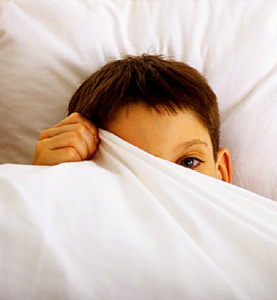SQUINT
 Strabismus or Cross-eyes or Squint is a vision problem in which both eyes are not in alignment with each other. Though it is common in infants and children, it can occur at any age. Adults may also develop the condition.
Strabismus or Cross-eyes or Squint is a vision problem in which both eyes are not in alignment with each other. Though it is common in infants and children, it can occur at any age. Adults may also develop the condition.
- Intermittent Squint
- Constant Squint
What Causes Squint
The exact cause of squint is not really known. The movement of each eye is controlled by six muscles. Each of these muscle acts along with its counterpart in the other eye to keep both the eyes aligned properly. A loss of coordination between the muscles of the two eyes leads to misalignment. This misalignment may be the same in all directions of gaze, or in some conditions the misalignment may be more in one direction of gaze, e.g., in squint due to nerve palsy.
Sometimes a refractive error hypermetropia (long sight) may lead to inward deviation of the eye. Poor vision in an eye because of some other eye disease like cataract, etc. may also cause the eye to deviate. Therefore it is important in all the cases of squint, especially in children, to have a thorough eye checkup to rule out any other cause of loss of vision.
Heredity
- Due to weak eye muscles or abnormal nerve impulses to the eye muscles
- Strabismus can accompany some systemic illnesses like diabetes, high blood pressure, multiple sclerosis, myasthenia gravis or thyroid disorders
- Blurred or poor vision due to cataract, corneal scars, glaucoma, refractive errors, optic nerve disease, retinal disease, tumors of the eye etc.
- Brought about by injuries
- Can accompany some systemic illnesses like diabetes, high blood pressure, multiple sclerosis, myasthenia gravis or thyroid disorders.
Symptoms of Squint
- Eyes that look misaligned
- Eyes that do not appear to move together
- Frequent blinking or squinting, especially in bright sunlight
- Tilting head to look at things
- Faulty depth perception
- Double vision
- Poor vision in one or both eyes
Treatment of Squint
The primary goal of treatment is to preserve or restore as much visual function as possible.
Treatment of squint varies depending on the exact type and cause of the strabismus. After a complete eye examination, including a detailed study of the inner parts of the eye, an ophthalmologist can recommend appropriate optical, medical or surgical therapy.
Nearly 40% patients with squint can be cured by spectacles and/or eye exercises. However, a large majority require surgical treatment. The squint operations are very safe and should be done at the earliest. Generally if the eyes are not aligned for more than 6 months in a child, irreversible damage to the three dimensional vision occurs, which is only partly reversible. Squint surgeries are performed successfully even in children as young as 4 months.
Non-Surgical Treatment – Spectacles and Prisms
Some squints are caused by refractive errors (spectacle powers), usually where one eye has a much higher power than the other. In such cases, squint can be corrected by prescribing proper spectacles.
In children, eye patch may be prescribed for the stronger eye to force the use of the weaker or suppressed eye. Eye drops are used to temporarily blur the vision of the preferred eye. Exercises may be prescribed to strengthen specific eye muscles.
In adult patients double vision caused by small squints can be corrected by incorporating prisms in the spectacles.
Squint eye treatment cost varies depending on condition.